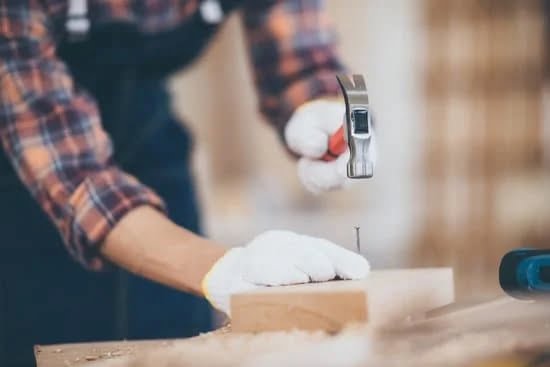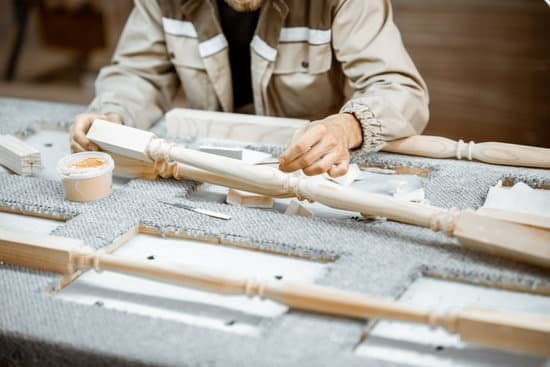Woodworking has been a timeless craft that serves both as a practical skill and an educational tool. Learning through woodwork offers a unique opportunity for individuals of all ages to explore their creativity, enhance their problem-solving abilities, and develop critical cognitive skills. In this article, we delve into the various benefits associated with engaging in woodworking projects and how it contributes to holistic learning experiences.
Dating back centuries, woodworking has played a significant role in shaping societies and cultures around the world. From crafting tools to constructing buildings, the history of woodworking as a skill is rich and diverse.
Today, it continues to be valued not only for its tangible outcomes but also for the numerous cognitive benefits it offers learners. Whether it’s in schools, maker spaces, or at home, woodwork provides a hands-on approach to education that stimulates mental faculties in unique ways.
One of the key advantages of learning through woodwork is the development of fine motor skills and hand-eye coordination. As individuals manipulate tools, measure materials, and assemble pieces together, they are honing their dexterity and spatial awareness.
Moreover, engaging in woodworking projects fosters creativity by encouraging individuals to think outside the box and find innovative solutions to design challenges. As we further explore the intricacies of woodwork in this article, we come to understand its profound impact on fostering innovation and nurturing emotional intelligence through self-regulation and patience.
History of Woodworking as a Skill and Educational Tool
Woodworking has a rich history as both a practical skill and an educational tool. Dating back centuries, woodworking was essential for creating tools, shelter, and other necessary items for survival. As societies evolved, so did woodworking techniques, becoming more refined and intricate. Additionally, woodworking began to be recognized as a valuable educational tool, allowing individuals to not only create physical objects but also learn important cognitive and practical skills in the process.
The history of woodworking as an educational tool can be traced back to ancient civilizations such as the Egyptians and the Greeks. These cultures used woodworking not only for functional purposes but also as a way to teach important lessons about craftsmanship, precision, and attention to detail. Woodworking was often integrated into formal education systems, providing students with hands-on experience that complemented their theoretical learning.
Furthermore, throughout history, woodworking has been seen as a way to develop a range of cognitive skills. From problem-solving to critical thinking, engaging in woodworking projects requires individuals to use their brains in new and creative ways.
By working with wood, learners are challenged to visualize and plan their projects from start to finish, promoting logical thinking and spatial awareness. This hands-on approach to learning through woodwork can enhance overall cognitive development and help individuals excel in various academic and professional endeavors.
- Ancient civilizations like Egyptians & Greeks used woodworking for education
- Teach craftsmanship precision & attention to detail
- Formal education systems integrated woodworking
- Develop cognitive skills like problem-solving & critical thinking through visualization & planning
The Cognitive Benefits of Engaging in Woodworking Projects
Woodworking projects offer numerous cognitive benefits for learners of all ages. By engaging in hands-on activities that involve planning, designing, and executing woodworking creations, individuals can enhance their cognitive abilities in various ways. Here are some key cognitive benefits of participating in woodworking projects:
- Improved Problem-Solving Skills: When working on a woodworking project, individuals often encounter challenges that require creative solutions. This process of identifying problems, brainstorming possible solutions, and implementing these solutions helps sharpen problem-solving skills.
- Enhanced Spatial Awareness: Woodworking tasks typically involve measuring, cutting, and assembling pieces of wood to create a final product. This hands-on experience helps individuals develop spatial awareness as they visualize how different components fit together to form a cohesive structure.
- Increased Attention to Detail: Successful completion of woodworking projects requires attention to detail throughout the entire process. From selecting the right materials to ensuring precise measurements and finishes, participants learn the importance of focusing on even the smallest aspects of their work.
Furthermore, learning through woodwork encourages individuals to think critically and analytically about the steps involved in creating a piece from start to finish. By engaging in this practical and tactile form of learning, participants can enhance their cognitive abilities while also developing important life skills. The hands-on nature of woodworking projects allows learners to apply theoretical knowledge in a practical setting, facilitating a deeper understanding of concepts and fostering a sense of accomplishment when completing a project successfully.
Lastly, engaging in woodworking projects can also improve memory retention as individuals need to remember specific steps, techniques, and safety protocols while working on their creations. This active engagement with different aspects of woodworking not only enhances memory but also promotes continuous learning and skill development. Overall, the cognitive benefits of learning through woodwork extend beyond the physical act of crafting objects out of wood to encompass heightened mental acuity and problem-solving capabilities.
Developing Fine Motor Skills and Hand-Eye Coordination Through Woodwork
Woodworking offers a unique opportunity for individuals, especially children, to develop and enhance their fine motor skills and hand-eye coordination. By engaging in hands-on activities such as sawing, hammering, sanding, and assembling pieces of wood, individuals are able to fine-tune their ability to control small muscles in their hands and fingers. This level of precision is crucial not only in woodworking but also in various other tasks in daily life.
Importance of Fine Motor Skills
Fine motor skills are essential for activities that require dexterity and precision such as writing, buttoning clothes, tying shoelaces, and using cutting utensils. Through woodworking projects, individuals not only improve their ability to manipulate tools effectively but also gain a sense of accomplishment as they see the tangible results of their efforts. This sense of achievement can boost self-esteem and motivation to further practice and refine these skills.
Enhancing Hand-Eye Coordination
Hand-eye coordination is the ability to synchronize information received from the eyes with hand movements to perform a task accurately. Woodworking tasks inherently demand a high level of hand-eye coordination as individuals must visually assess measurements, angles, and alignment before making precise movements with tools. As individuals progress in their woodworking skills, they become more adept at coordinating visual input with manual actions, leading to improved overall coordination and performance in various activities.
Creativity and Problem-Solving
Fostering Creativity in Woodworking
Woodworking projects provide a unique platform for individuals to unleash their creativity and imagination. From designing intricate patterns to selecting the perfect wood finish, each step in the woodworking process requires creative thinking. By encouraging individuals to think outside the box and experiment with different techniques, woodworking fosters a sense of innovation that can be applied beyond the workshop. This creative mindset helps individuals develop problem-solving skills that are essential in both personal and professional contexts.
Encouraging Critical Thinking Skills
Woodworking challenges individuals to find solutions to complex problems, such as measurements, angles, and design flaws. By engaging in hands-on projects that require critical thinking, individuals learn how to approach challenges systematically and strategically.
Whether it’s troubleshooting a machine malfunction or adjusting a design plan midway through a project, woodworking teaches individuals how to think on their feet and adapt to unexpected obstacles. These problem-solving skills are transferrable to various aspects of life, making woodworking an invaluable tool for fostering innovation.
Promoting Innovation Through Hands-on Learning
Learning through woodwork promotes innovation by encouraging individuals to experiment with new ideas and methods. Whether it’s incorporating sustainable materials into a project or combining traditional techniques with modern technology, woodworking provides a platform for innovation to flourish.
By embracing trial and error as part of the learning process, individuals develop resilience and perseverance in the face of challenges. The ability to innovate is not only a valuable skill in today’s fast-paced world but also fosters a sense of fulfillment and accomplishment in those who engage in woodworking projects.
Woodwork and Emotional Intelligence
Woodwork is not just about creating tangible objects; it also offers a unique opportunity to develop emotional intelligence. Understanding the concepts of self-regulation and patience are essential aspects of woodworking that can benefit learners of all ages.
Patience is a virtue that is often tested in woodworking projects, requiring individuals to slow down, focus on details, and persist through challenges. This practice helps individuals cultivate patience in their approach to tasks, learn how to manage frustration, and appreciate gradual progress towards a final goal.
Furthermore, self-regulation plays a significant role in woodworking as individuals must exercise restraint, control impulses, and manage their emotions throughout the process. Whether it’s determining the right amount of pressure needed to saw a piece of wood or controlling the pace of chiseling intricate details, woodwork enables individuals to practice self-regulation in a hands-on setting.
By mastering these skills in woodworking, learners can transfer them to other areas of their lives, leading to improved decision-making, stress management, and overall emotional well-being.
In addition to individual growth, the collaborative nature of woodworking also fosters emotional intelligence by promoting teamwork, communication, and empathy. Working alongside peers on group projects teaches individuals how to communicate effectively, express ideas respectfully, and understand varying perspectives. These interpersonal skills are crucial in building strong relationships with others and navigating social dynamics both inside and outside educational settings.
| Emotional Intelligence Component | Relevance in Woodworking |
|---|---|
| Self-Regulation | Exercising restraint during woodworking projects |
| Patience | Cultivating patience through gradual progress in woodwork |
| Empathy | Promoting empathy through collaboration on group woodworking projects |
The Social Aspect of Woodworking
Woodworking goes beyond individual craftsmanship; it also provides opportunities for building community and fostering collaboration among individuals. Whether it’s a group project, a workshop, or simply sharing techniques and ideas, the social aspect of woodworking is an essential component of this craft. Engaging in woodworking activities with others can lead to the creation of a supportive and inclusive community where participants can learn from each other, share their knowledge and skills, and collaborate on various projects.
One of the key aspects of the social element of woodworking is the opportunity for mentorship and learning from more experienced woodworkers. Novices can benefit greatly from the guidance and advice provided by seasoned craftsmen, while experienced woodworkers may find joy in passing down their knowledge to the next generation. This mentorship not only improves technical skills but also helps develop meaningful relationships within the woodworking community.
In addition to mentorship, woodworking offers a unique platform for teamwork and collaboration. Working on group projects requires effective communication, shared goals, and cooperation among team members. Through collaborative woodworking projects, individuals learn how to communicate effectively, problem-solve together, delegate tasks according to strengths, and work towards a common outcome. These experiences not only enhance woodworking skills but also promote essential life skills such as teamwork, leadership, and conflict resolution.
| Social Element | Benefits |
|---|---|
| Mentorship | Guidance from experienced woodworkers |
| Collaboration | Teamwork skills development |
Integrating Woodwork Into Educational Curriculum
Woodwork has long been recognized as a valuable educational tool, offering students a hands-on approach to learning that fosters various skills and abilities. In recent years, there has been a renewed interest in integrating woodwork into educational curriculum due to its numerous benefits. By incorporating woodworking projects into schools and learning environments, educators are able to tap into the potential for experiential learning through hands-on activities that engage students in a unique way.
One of the key advantages of integrating woodwork into educational curriculum is the development of practical skills that are useful both in and out of the classroom. Through woodworking projects, students learn how to measure, cut, sand, and assemble pieces of wood, honing their abilities to follow instructions and problem-solve independently.
This hands-on approach not only enhances their understanding of mathematical concepts such as measurement and geometry but also reinforces critical thinking skills by requiring them to plan and execute their projects effectively.
Furthermore, learning through woodwork provides a tangible outlet for creativity and self-expression. As students engage with different tools and materials, they are encouraged to think outside the box, experiment with design ideas, and bring their unique visions to life.
This process not only nurtures their artistic abilities but also cultivates an innovative mindset that is essential for success in today’s rapidly evolving world. By encouraging creativity and problem-solving through woodwork, educators can empower students to explore new ideas, take risks, and unleash their full potential across various academic disciplines.
Tips and Strategies for Incorporating Woodwork Into Learning Environments
Woodworking projects can be a valuable addition to learning environments, offering students the opportunity to engage in hands-on experiences that promote growth and development. Incorporating woodwork into educational settings requires careful planning and consideration to ensure a safe and productive learning experience.
One tip for educators looking to integrate woodworking into their curriculum is to start small and build gradually. Begin with simple projects that allow students to familiarize themselves with basic tools and techniques before progressing to more complex creations.
Another strategy for incorporating woodwork into learning environments is to provide clear instructions and demonstrations for students. By breaking down each step of a woodworking project and modeling proper techniques, educators can support students in developing their skills and confidence in working with wood. Additionally, offering opportunities for peer collaboration and mentorship can enhance the learning experience, allowing students to learn from one another’s strengths and expertise.
It is also important for educators to create a supportive and inclusive environment for students engaging in woodworking projects. Encouraging experimentation and creativity, while providing guidance and feedback, can help foster a sense of pride and accomplishment in their work. By celebrating each student’s unique talents and contributions, educators can cultivate a positive learning atmosphere that promotes growth, self-discovery, and skill development through the process of learning through woodwork.
Conclusion
In conclusion, embracing the power of learning through woodwork offers a multitude of benefits that extend beyond simply crafting tangible pieces. The history of woodworking as a skill and educational tool reveals its longstanding tradition in fostering creativity, problem-solving skills, and cognitive development. Engaging in woodworking projects not only hones fine motor skills and hand-eye coordination but also stimulates innovation by encouraging individuals to think outside the box and find solutions to unique challenges.
Furthermore, the emotional intelligence gained through woodworking cannot be understated. Understanding self-regulation and patience are crucial components of working with wood, teaching individuals the value of perseverance and attention to detail. Moreover, the social aspect of woodworking should not be overlooked, as it provides opportunities for building community and fostering collaboration among learners.
By integrating woodwork into educational curriculum with practical applications and success stories, educators can harness its transformative potential in enhancing various aspects of learning. From promoting critical thinking to instilling a sense of accomplishment, learning through woodwork opens doors to endless possibilities for growth and development. It is clear that embracing this powerful tool can truly enrich the overall educational experience for individuals of all ages.

Hi everyone! I’m a woodworker and blogger, and this is my woodworking blog. In my blog, I share tips and tricks for woodworkers of all skill levels, as well as project ideas that you can try yourself.





